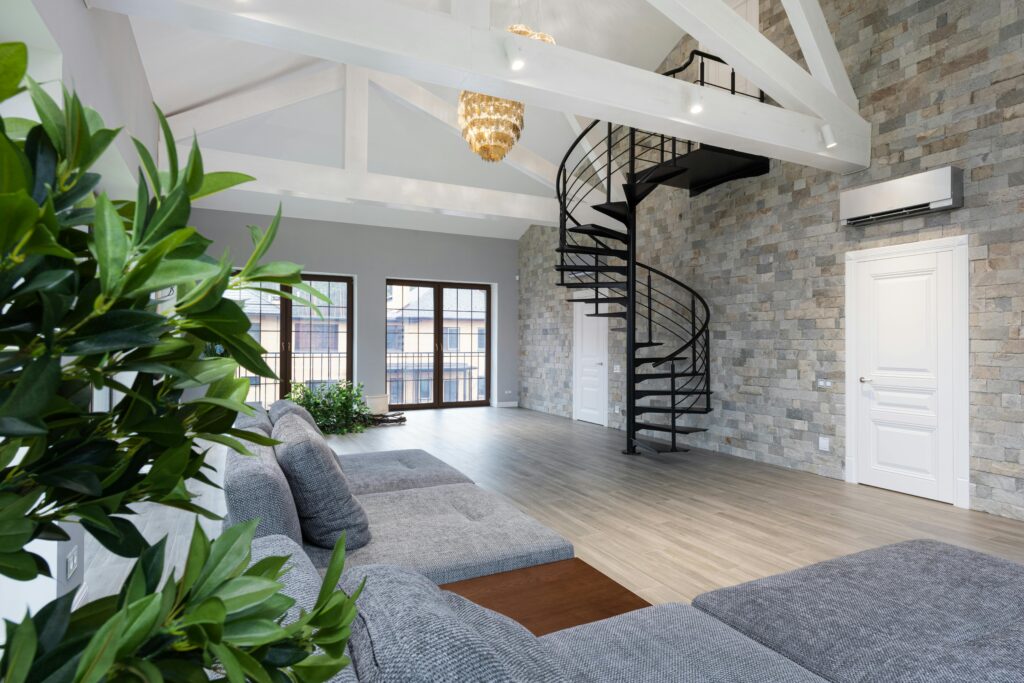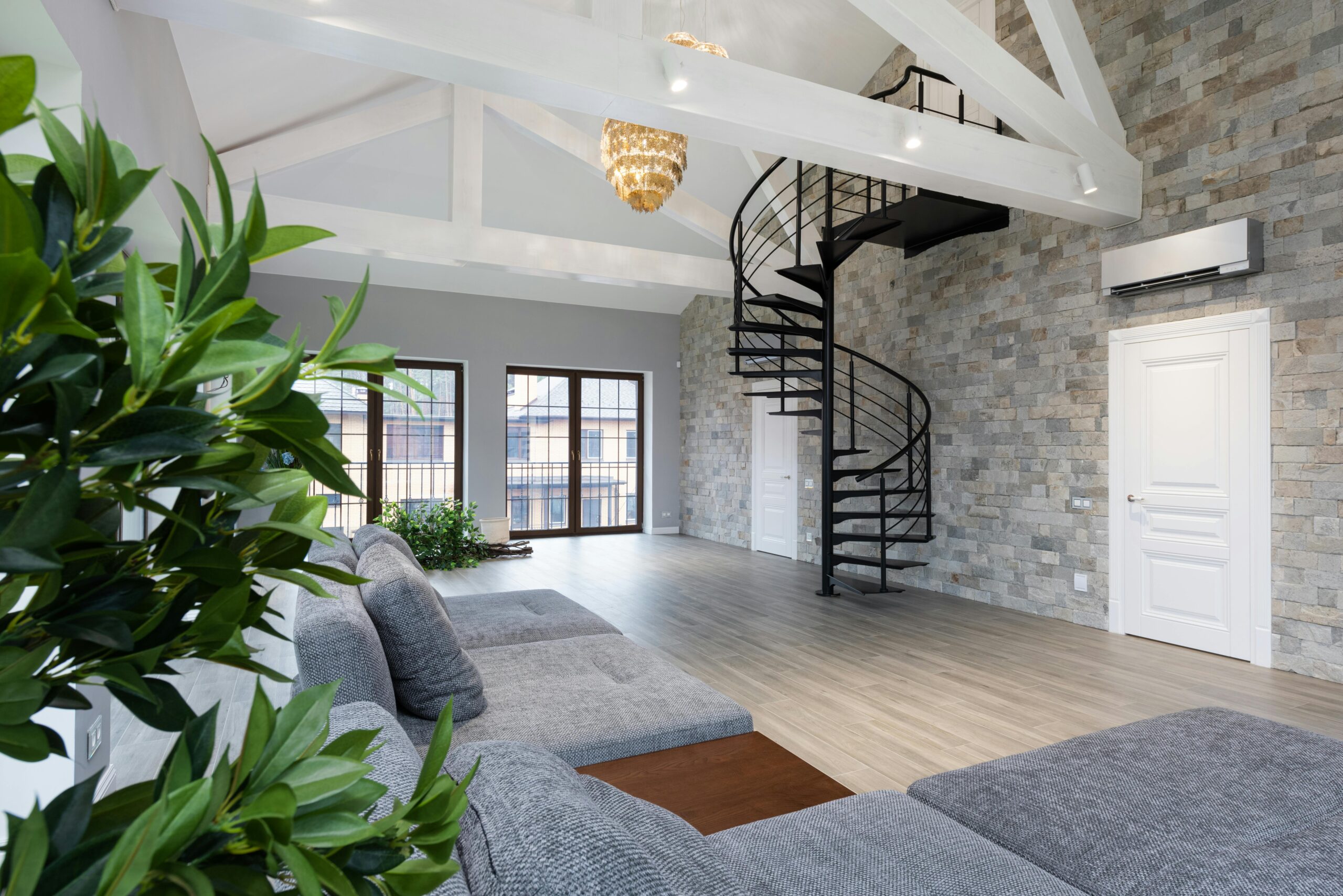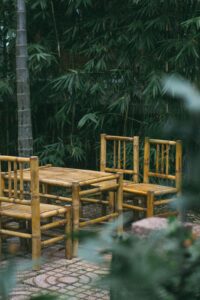Organic modernism is a design trend that seamlessly blends natural materials with modern aesthetics, creating spaces that are both stylish and sustainable. This design philosophy emphasizes the use of organic elements such as wood, stone, and natural fibers, combined with clean lines and minimalist decor. In this blog post, we’ll explore the principles of organic modernism, its benefits, and how you can incorporate this timeless style into your home.

Table of Contents
What is Organic Modernism?
This is a design approach that harmoniously integrates nature-inspired elements with contemporary design. This style is characterized by the use of natural materials, neutral color palettes, and an emphasis on simplicity and functionality. The goal is to create spaces that feel warm, inviting, and connected to the natural world, while maintaining a modern and uncluttered look.
Key Elements of Organic Modernism
1. Natural Materials At the heart of this movement are natural materials such as wood, stone, bamboo, and natural fibers like cotton, wool, and linen. These materials add texture, warmth, and an organic feel to the space.
2. Neutral Color Palette The design favors neutral tones like whites, beiges, browns, and grays. These colors create a calm and serene atmosphere, allowing the natural beauty of the materials to shine through.
3. Clean Lines and Minimalism This design style embraces clean lines and minimalist decor. Furniture pieces are often simple and functional, with a focus on craftsmanship and quality.
4. Indoor Plants Bringing nature indoors is a key aspect of organic modernism. Indoor plants add life, color, and a sense of tranquility to the space. They also improve air quality and create a more vibrant environment.
5. Sustainable Design Sustainability is a core principle of organic modernism. This includes using eco-friendly materials, repurposing or upcycling furniture, and choosing products that are built to last.
Benefits of Organic Modernism
1. Connection to Nature Organic modernism creates a strong connection to nature, which can enhance well-being and reduce stress. Natural materials and indoor plants bring the beauty of the outdoors inside, fostering a sense of tranquility and balance.
2. Sustainability By prioritizing sustainable materials and practices, organic modernism promotes environmental responsibility. Choosing eco-friendly furniture and decor reduces your carbon footprint and supports a healthier planet.
3. Timeless Aesthetic The timeless appeal of organic modernism lies in its simplicity and natural beauty. This design style is not subject to passing trends, making it a long-lasting and adaptable choice for any home.
4. Versatility Organic modernism can be adapted to various spaces and personal tastes. Whether you prefer a more rustic or contemporary look, this design philosophy can be tailored to suit your individual style.

How to Incorporate Organic Modernism into Your Home
1. Choose Natural Materials Opt for furniture and decor made from natural materials. Look for pieces crafted from solid wood, stone, bamboo, and natural fibers. Avoid synthetic materials and plastics whenever possible.
2. Embrace Minimalism Keep your space uncluttered and focus on functionality. Choose simple, well-crafted furniture pieces that serve a purpose. Avoid excess decor and let the natural beauty of the materials stand out.
3. Use a Neutral Color Palette Stick to neutral tones for walls, furniture, and textiles. Whites, beiges, grays, and earthy browns create a calm and cohesive look. Add subtle pops of color through accessories and plants.
4. Add Greenery Incorporate indoor plants to bring life and color to your space. Choose a variety of plants in different sizes and shapes to create visual interest. Consider using plant stands, hanging planters, and terrariums to display your greenery.
5. Prioritize Sustainability Select eco-friendly and sustainable products. Look for furniture made from reclaimed wood, recycled materials, or sustainably sourced resources. Support brands and artisans who prioritize ethical and environmentally responsible practices.
6. Focus on Quality and Craftsmanship Invest in high-quality furniture and decor that will stand the test of time. Well-crafted pieces made from durable materials not only look better but also contribute to a more sustainable lifestyle by reducing the need for frequent replacements.
Conclusion
Organic modernism is more than just a design trend; it’s a lifestyle choice that emphasizes harmony with nature, sustainability, and timeless beauty. By incorporating natural materials, neutral colors, clean lines, and indoor plants, you can create a home that is both stylish and eco-friendly. Embrace the principles of organic modernism to transform your living space into a serene and sustainable sanctuary.
Stay tuned for more tips and inspiration on sustainable living and eco-friendly design!


